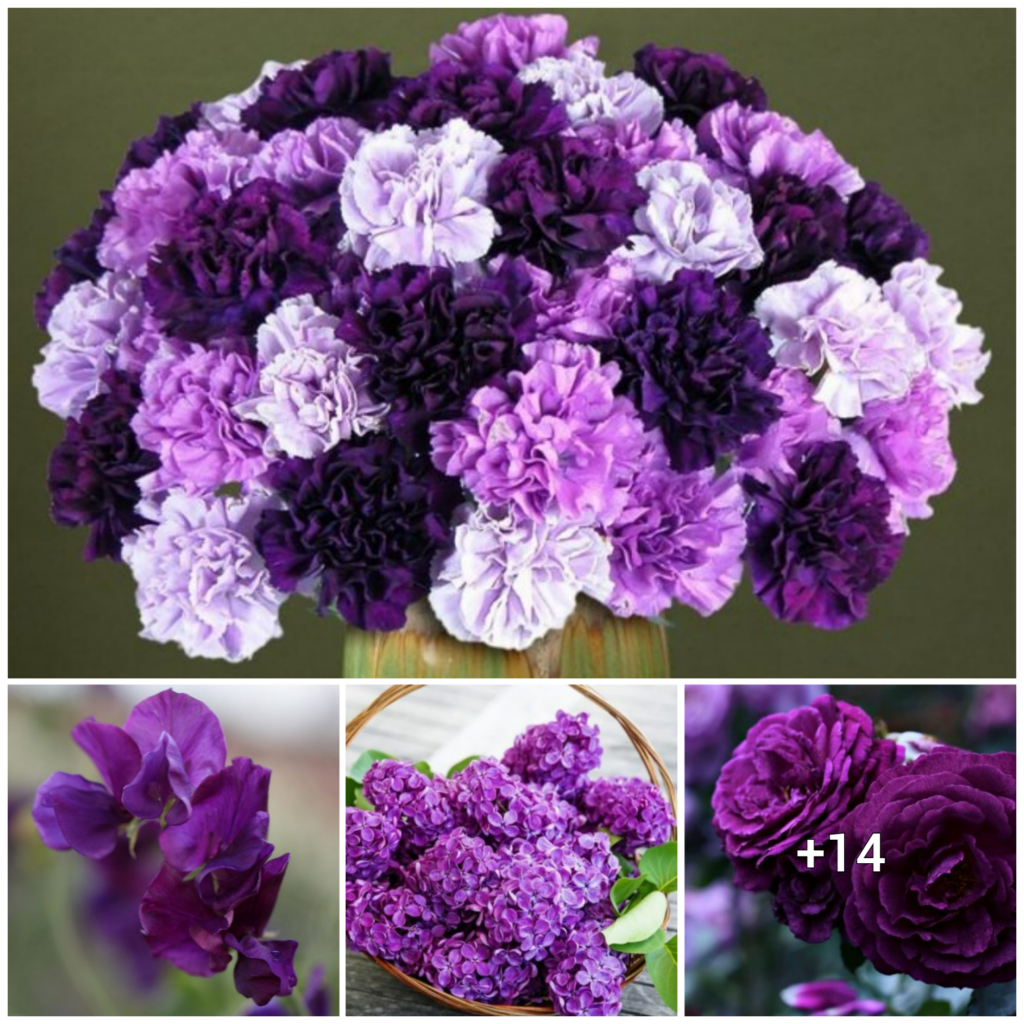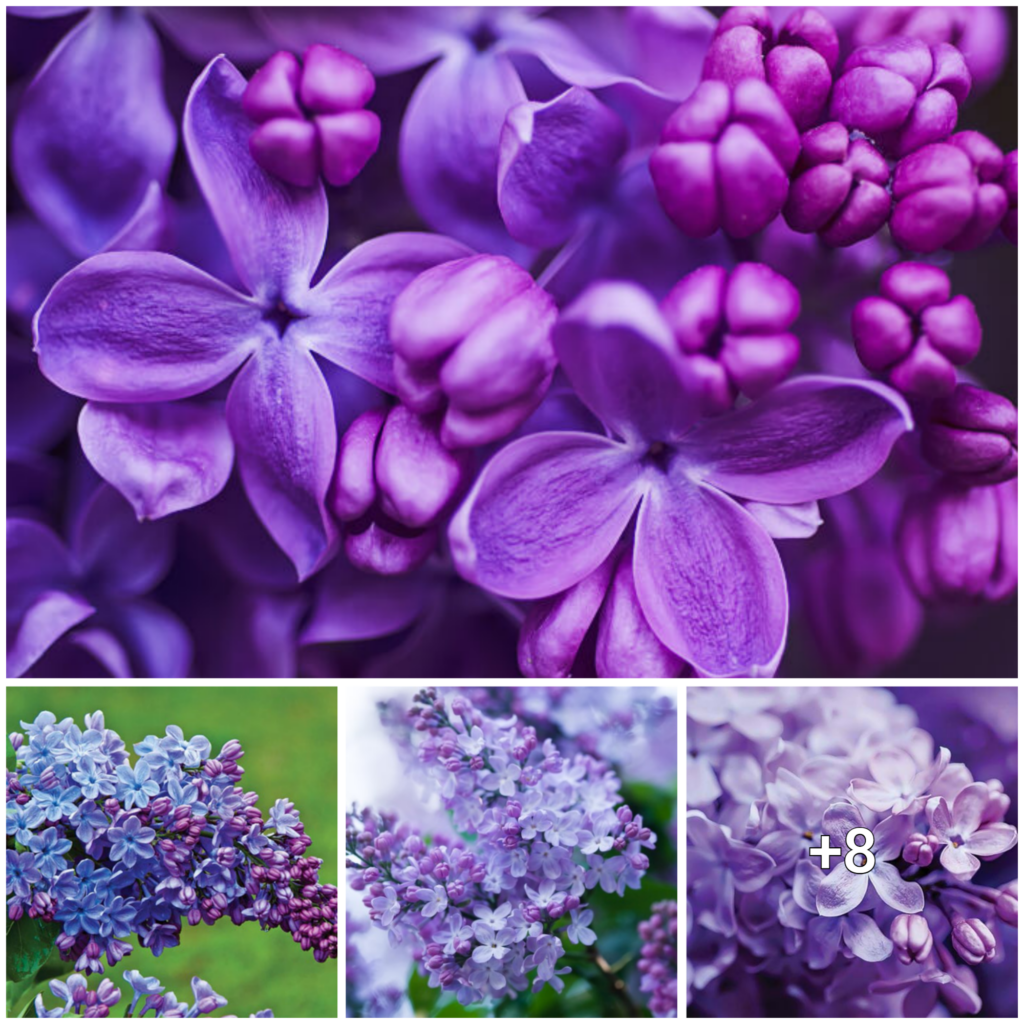Lilacs, also known as Syringa, are traditional garden plants that produce clusters of fragrant, tube-shaped flowers in purple, pink, and white hues from late spring to early summer. These flowers are not only beautiful for cutting and displaying, but they are also edible.
The most common type of lilac is Syringa vulgaris, which belongs to the olive family and is native to East Asia and Southeast Europe. Although lilacs were once very popular among the Edwardians and suburban gardens, they fell out of fashion for a while. However, there has been a recent resurgence in interest in lilacs due to their stunning flowers and delightful scent.
There are numerous lilac varieties to choose from, with some being more compact and suitable for smaller gardens or containers, while others are larger and can be grown as a focal point in a lawn or at the back of a mixed border. Lilacs typically grow around 30-60cm per year, and for a longer season of interest, you can try growing a late-flowering clematis alongside the larger cultivars.
Growing lilacs is relatively easy – plant them in well-drained, slightly alkaline soil in full sun, prune them after flowering to maintain their shape, and apply mulch in the spring. For more information on planting, caring for, propagating, and troubleshooting lilacs, as well as tips on buying the best varieties and where to plant them, check out the resources provided.

To successfully plant the Syringa vulgaris ‘Lois Amee Utley’ variety of lilac, ensure they are placed in a sunny spot with well-draining, fertile soil that is either alkaline or neutral. These beautiful flowers also do well in chalky or alkaline soil conditions. When planting, make sure to provide them with the right environment for optimal growth and blooming.

When planting lilac, ensure to dig a hole that is large enough and plant the lilac at the same level as the soil line. Make sure to gently firm down the soil and water the plant well. Adding mulch after planting can help to retain moisture in the soil. If you are planting lilac in a pot, opt for one that is at least 60cm in diameter and use John Innes No.3 compost with some added sand or grit for proper drainage.
If you are looking to buy lilac online, popular options include Crocus, Thompson & Morgan, and Primrose.
To care for your lilac, remember to prune it regularly to remove dead or overgrown branches, and fertilize it with a balanced fertilizer in the spring. Water your lilac during dry spells and keep an eye out for any pests or diseases. Enjoy the beautiful blooms and sweet fragrance of your lilac plant!

Refreshing your lilac shrubs during the summer by deadheading spent blooms is a great way to keep them looking their best. Mulching your lilacs in the spring can also help them thrive. When the flowers start to fade in midsummer, take the time to prune the shrubs to your desired height and shape, removing any dead or diseased wood as needed.
If you have an old, overgrown lilac tree that needs some TLC, pruning it back while it’s dormant in the winter can help rejuvenate it. Lilacs are resilient to hard pruning, so don’t be afraid to cut back the whole plant to about 1m above ground if needed. Just keep in mind that this will likely result in a year without flowers. Alternatively, you can gradually cut back some of the stems over a few years to still enjoy some blooms each spring.
When it comes to propagating lilacs, consider taking softwood cuttings or transplanting suckers that grow at the base of the plant. While lilacs are typically low-maintenance, keep an eye out for lilac leaf mining moths, thrips, and other common issues like poor flowering due to drainage or sunlight issues. If you spot any problems like lilac blight, prune out the affected areas in dry weather to help control the spread.
If you’re in the market for new lilac plants, you can check out garden centres or browse online for a wider selection. Make sure to consider the ultimate height and spread of the lilac variety you choose. Some reputable online nurseries to buy lilac from include Crocus, Thompson & Morgan, and Primrose.
For those looking to add new varieties of lilacs to their garden, consider planting Syringa ‘Red Pixie’ for a vibrant and beautiful addition.

Looking for a beautiful addition to your garden? Consider the Lilac ‘Red Pixie’! This compact Syringa variety produces loads of sweet-smelling pink flowers that bloom from vibrant red buds. It’s a great choice for smaller gardens or even for growing in a spacious pot. With a height and spread of 1.8m x 1.8m, it’s a versatile plant that adds beauty and fragrance to any outdoor space. You can purchase this lovely Syringa ‘Red Pixie’ from Crocus, along with other varieties like Syringa meyeri ‘Palibin’.

The Korean lilac Syringa meyeri ‘Palibin’ is a lovely plant that produces clusters of sweet-smelling, pinkish-purple flowers in the late spring and early summer. Its dark green leaves provide a beautiful contrast to the blooms. This compact and slow-growing shrub is perfect for sunny ornamental borders, as well as smaller gardens or container gardening. With a height and spread of 1.5m, it can be easily incorporated into various garden settings. You can purchase this beautiful Syringa from Thompson & Morgan or Crocus. Another popular lilac variety is Syringa vulgaris ‘Primrose’.

Lilac Syringa vulgaris ‘Primrose’ boasts beautiful white flowers that transition into a soft cream-yellow hue, emitting a delightful lilac fragrance. This variety typically reaches a height and spread of 3 meters. Don’t miss out on adding this lovely Syringa vulgaris ‘Primrose’ to your garden collection – available for purchase at Thompson & Morgan. Also check out the equally stunning Syringa vulgaris ‘Sensation’.

Introducing the Syringa vulgaris ‘Sensation’, a captivating lilac variety adorned with unique purple-red flowers bordered in white. This stunning shrub can grow up to 4 meters in height and width. You can purchase the Syringa ‘Sensation’ from either Crocus or Primrose. Another beautiful option is the Syringa vulgaris ‘Katherine Havemeyer’.

“Katherine Havemeyer” is a lovely variety of Syringa vulgaris, known for its spreading nature and beautiful double lavender blue flowers that contrast beautifully with its heart-shaped leaves. This shrub can grow up to 4 meters in height and spread, making it a great addition to any garden. You can purchase “Katherine Havemeyer” from various vendors such as Crocus and Thompson & Morgan. Another similar variety to consider is “Madame Lemoine.”

The Syringa vulgaris ‘Madame Lemoine’ is a stunning double white-flowered plant created by the French breeder Victor Lemoine back in 1890, and it remains a popular choice for gardens to this day. It can grow to a height and spread of 7 meters. You can purchase this beautiful plant from Primrose or Crocus. Another variety to consider is the Syringa vulgaris ‘Charles Joly’.

Syringa vulgaris ‘Charles Joly’ offers breathtaking double purple-red blooms that will catch anyone’s eye. With a height and spread of 4m x 4m, this beautiful flower is available for purchase from various reputable sources like Crocus and Thompson & Morgan.



